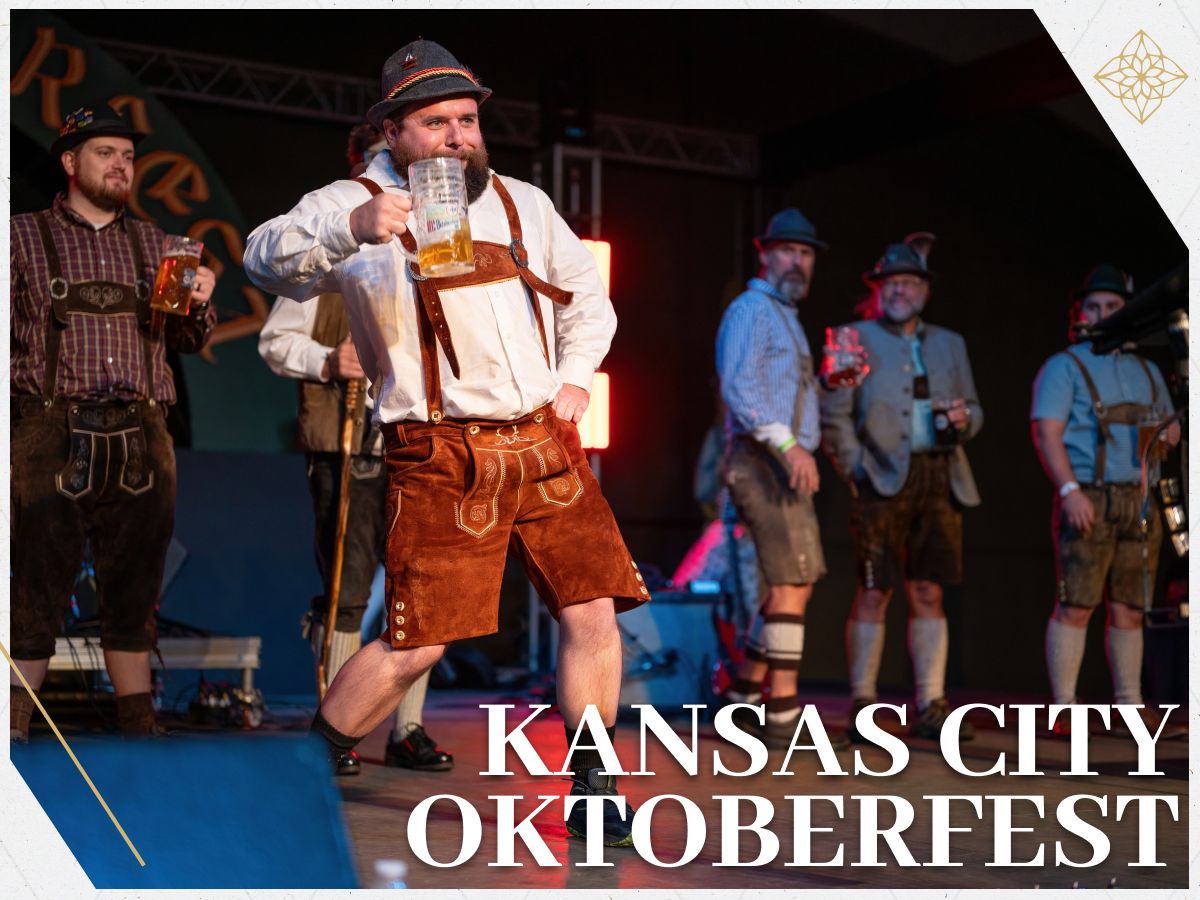Oktoberfest Recipes
Get a $10 store credit for your first order
Recipes from the Oktoberfest: A tasty tour of Bavaria from your own home!
Ah, Oktoberfest! The glorious time of year when people around the world think of Germany and conjure images of lederhosen-clad folks, frothy beer mugs, and rollicking music playing in beer tents. But let's not forget the food! If there’s one thing Germans do well (besides engineering), it's crafting mouthwatering dishes that stick to your ribs and warm your soul.
Can't make it to Munich this year? We have the solution! Let's embark on a flavorful adventure with some classic Oktoberfest recipes. By the end, you might just find yourself yodeling from culinary delight!
Brezn (Bavarian Pretzels)
No Oktoberfest celebration is complete without the iconic Brezel. Salty, doughy, and with a signature twist, these are the arm candy of German snacks (literally, because you wear them on your arm at the fest). Prepare them at home, and be prepared for the wafting aromas to turn your kitchen into a mini Munich!
Pretzel-Palooza: The grand gala of golden goodness!
Prepare for a delicious pretzel-making adventure. Start by heating 3/4 cup of water to a cozy temperature of 110°-115°F. Add 1 teaspoon of granulated sugar to the warm water and let it dissolve.
Next, add half a package of active dry yeast to the water-sugar mixture. Allow the yeast to bubble and froth for about 5 minutes.
In a food processor, combine 2 1/4 cups of all-purpose flour and 3/4 teaspoon of kosher salt. Give them a quick mix, and then add the yeast mixture to the food processor. Blend the ingredients together for about 30 seconds until they form a dough.
Now, it's time for the dough to rise. Grease a bowl and place the dough in it. Cover it with plastic wrap and let it double in size for about 30 minutes. While the dough is rising, preheat your oven to 450°F and prepare a baking sheet with parchment paper and a light coating of cooking spray.
Once the dough has risen, divide it into 6 portions. Shape each portion into a 14-inch rope, fold it into a horseshoe shape, and twist it to create the classic pretzel shape. Place these pretzels on the prepared baking sheet.
Give the pretzels a quick dip in a pot of water with 1/2 cup of baking soda for about 30 seconds. Remove them with a slotted spoon and place them back on the baking sheet.
To give your pretzels a beautiful finish, brush them with a beaten egg and sprinkle them with pretzel salt. Pop them in the oven and bake for approximately 12 minutes or until they turn golden brown.
Let the pretzels cool for a bit, but serve them while they're still warm and enjoy your homemade pretzel treats!
Sauerkraut: It’s all about the crunch and punch!
Contrary to popular belief, Germans don’t eat sauerkraut with every meal. That’s just a hilarious stereotype, like all Germans driving at rocket speed on the Autobahn (okay, that one might be true). However, for Oktoberfest, sauerkraut adds the perfect tangy complement to those meaty dishes. Plus, fermented foods are good for your gut!
Unveiling: The great Sauerkraut spectacle!
Let's get started on making sauerkraut with a simple process. Begin by finely chopping your cabbage and placing it in a large bowl.
Sprinkle some salt over the cabbage to kickstart the fermentation process. It's like setting the foundation for what's to come.
Now, it's time to give the cabbage a gentle pounding to release its juices. Think of it as encouraging the flavors to meld together, rather than just mashing it up.
Once your cabbage is well-prepared, transfer it to a glass or ceramic jar or crock. Use a tamper or any suitable tool to press the cabbage down, ensuring there are no air pockets and that the cabbage is fully submerged in its brine.
Seal the jar and place it in a cool, dark spot. Remember to open the lid briefly each day to release any built-up air pressure, allowing your sauerkraut to ferment peacefully.
Check your sauerkraut daily and taste it after a few days to see when it reaches the desired tanginess and texture.
When your sauerkraut is perfectly fermented, secure the lid and store it in the refrigerator or a cool storage area. It's now ready to enjoy!
Kartoffelsalat (Potato salad)
Let's explore the differences between the American and German potato salads. While the American version is known for its mayo-based dressing, the German variety features a heartier blend of broth, bacon, and mustard. It's a warm and comforting dish that might transport you to the idyllic Bavarian countryside.
For this recipe, we'll start with Yukon Gold potatoes. Look for ones that are similar in size for even cooking. Give them a good scrub, and then immerse them in a salted water bath. Cook them until they're tender but not overly soft – we're aiming for a well-balanced texture.
Once the potatoes have cooled a bit, peel them and slice them into 1/4 inch strips. Place these slices in a glass container, as metal can react with the vinegar in the dressing.
Now, let's prepare the dressing. In a medium saucepan, combine beef broth, vinegar, mustard, sugar, salt, and white pepper to create a flavorful mixture. Add chopped onions to the saucepan and bring it to a boil, then remove it from the heat.
Pour this hot onion-broth mixture over the waiting potatoes. Cover the container with plastic wrap or a lid and let the flavors meld at room temperature. After an hour, drizzle some oil over the salad and gently toss it for a harmonious blend. Add a touch of salt and pepper to taste.
Keep in mind that, like a fine performance, this Swabian-Style German potato salad gets even better with time. It's best enjoyed the next day and served at room temperature for the ultimate culinary experience. Enjoy your Kartoffel-Carnival!
Wrap-Up
So there you have it - an Oktoberfest culinary journey right from the comfort of your own kitchen. Your senses have traveled through the alleys of German gastronomy, savoring the melodies of flavors that are hallmarks of the world-famous Oktoberfest in Munich. While the experience might be a tad different from the bustling tents in Munich, the flavors are as authentic as they come. And let's face it, recreating these dishes at home is a testament to German heritage and culture, a delightful and edible bridge that connects us to the very heart of Bavaria.
But here's the thing: there's a vast difference between a virtual journey and the real thing. Can you imagine pairing these delectable dishes with the ambience of Munich's streets?
Now, how about we offer you a chance to take this culinary adventure a step further? Below this article, there's a vivid image that's your passport to the authentic Oktoberfest experience. It's your chance to “Win a Trip to Munich”. Don't just settle for a taste tour; immerse yourself in the sights, sounds, and soul of Bavaria. Click on the image, sign up, and who knows?
Your next Oktoberfest could be amidst the cobblestone streets, grand beer tents, and the heartwarming embrace of German hospitality. Dive into the real Oktoberfest magic, and let Munich welcome you with open arms.
FAQ
What is the traditional food for Oktoberfest?
Oktoberfest revels in Bavarian delights. Favorites include Bratwurst (German sausages), Brezeln (large soft pretzels), Hendl (roast chicken), Schweinebraten (pork roast), Knödel (dumplings), and Obatzda (a spiced cheese-butter spread).
What do you serve at a German themed party?
For a German-themed bash, serve a range of wursts (sausages), sauerkraut, warm potato salad, Black Forest Cake, Bienenstich (a honey almond-topped cake), schnitzel, Spätzle (soft egg noodles), and hearty German breads.
Get a $10 store credit for your first order









Leave a comment